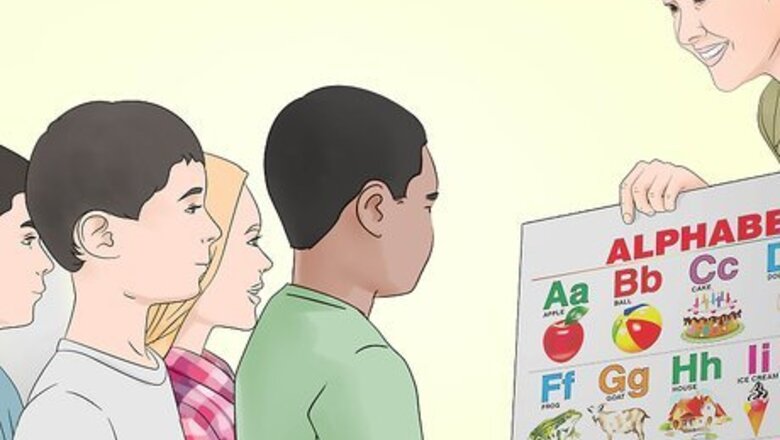
views
Teaching the Essentials

Teach the alphabet. The first step in learning to read is recognizing the letters of the alphabet. Use a poster, chalkboard, or notebook to write or display the alphabet. Go over the letters with the student until he or she learns them all. Use the alphabet song to help the student to remember. Have fun with the alphabet! Your student will learn more easily if their ABCs become a fun part of their daily routine. Once the student knows the alphabet in order, challenge him or her by writing several letters out of order and ask them to recall the letters. You can also name one of the letters and ask the student to point it out. When teaching a child, start by teaching his or her the letters of their own name. This makes learning the letters personal and important. Because it is something important to the child — his own name - the child “owns” his learning, and will be excited by it.

Teach sounds. Once your student is familiar with the alphabet, you will need to teach them the sounds of each letter. Learning the name of the letter is not enough, as a letter may be pronounced differently depending on the word. For example the ''g sound in the word "green" is different from the g sound in the word "giraffe." Once the student has mastered the sounds of individual letters, they can practice blending letter sounds together to form words. This knowledge of the basic sounds of spoken language and their ability to be manipulated to form different words is known as phonemic awareness. Go over each letter and teach the sounds that the letter makes. Give examples of words that start with each letter and ask the student to give examples as well. You can also try stating a word and asking the student which letter it starts with. You can then familiarize students with common letter pairs which make specific sounds, such as “ch”, “sh”, “ph”, “qu”, “gh”, and “ck”. Test their memory with pop quizzes at random times during the day.
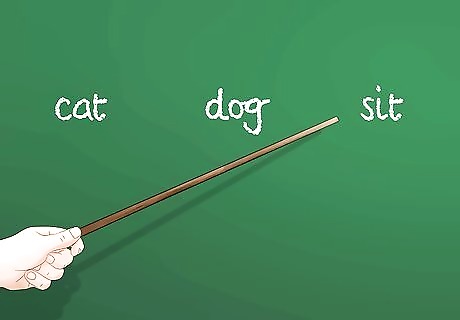
Teach short, one-syllable words. Introduce your student to basic reading by showing them two or three letter, one-syllable words. Beginners tend to do best with words that have a consonant-vowel-consonant pattern, such as CAT or DOG. Start by asking the student to read a simple, one-syllable word such as "sit." Have the student name each letter, then attempt to read the word. If the student makes a mistake, ask again what sound the letter makes. The student will reflect and either remember or have to be reminded. When the word is read successfully, generously congratulate the student. Repeat this process with other simple, one-syllable words. Once a list of about five words is created, go back to the first word and see if the student can read it more quickly. Continue to introduce more words, gradually introducing longer and more complex words.

Teach sight words. Sight words are words that need to be learned by heart as they diverge from the normal rules of spelling. Many sight words such as "father", "again" and "friend" are also high frequency words. For this reason, it is very important that readers are able to instantly recognize these words when they come across them in a text. The most common sight words have been compiled onto lists, such as the famous Dolch Sight Word Series and the Fry List. Focus on 1 or 2 sight words each day. When your student learns a word, move on to the next on your list. To teach sight words, try associating each word with an illustration. Presenting students with illustrations of sight words along with their print versions helps them to make important connections between the object and the word. Flashcards or posters with a colorful picture and the word written under it are excellent sight word teaching tools. Repetition is key to sight word acquisition. Beginner readers should be given the opportunity to read and write a new sight word multiple times. The repetitive reading of texts featuring certain sight words is one good strategy for helping students commit these words to memory.

Build vocabulary. A student's reading vocabulary is defined as the the number of words that they know and understand as they read. Expanding your student's vocabulary is an integral part of teaching them how to read. The wider their vocabulary, the more advanced texts they will be able to read and comprehend. You can help your student to improve their vocabulary in several ways: Read with your student daily. For example, you could have story time after lunch or before bed, depending on your circumstances. Read to them and have them read back. When you're reading, help them follow along. Encourage them to read as much as possible and to vary the type of text they read. When reading, ask your students to underline any words they don't know, then you can explain or help them look them up the meaning in the dictionary later. Teach them the definitions of words or other attributes of words, such as the meanings of common roots, prefixes and suffixes. Use association methods to help students draw connections between what they do know and words that they do not know. Pairing a new word with a known synonym is an example.

Build fluency. Fluency is the ability to read quickly and accurately, with appropriate rhythm, intonation, and expression. Beginner readers do not possess this ability. As a result, they often struggle through texts that are beyond their "comfort" level. Without fluency, a reader will focus all of their energies on correctly pronouncing the words in front of them, rather than absorbing their meaning. When this happens, the reader fails to understand the meaning of the text, making the ability to read it pointless. That is why building fluency is so important. Some non-fluent readers will hesitate when reading, unable to sound out words or figure out punctuation. Others will read without expression or changing their tone, rushing through the words without thinking about their meaning. The best way to promote fluency in beginner readers is through repeated reading. In repeated reading, the student reads a passage many times while the teacher provides feedback about speed and accuracy levels, helps with problem words, and demonstrates fluent reading. Help your student improve fluency by finding a text they enjoy. They'll better enjoy re-reading a favorite text. It is also important to ensure that the student is familiar with different types of pronunciation. Make sure that your student knows how punctuation marks such as a comma, a period, a question mark and an exclamation point will affect the flow and intonation of their reading.

Test reading comprehension. Reading comprehension is the process of constructing meaning from what is read. In order to comprehend a text, a reader must associate the words they read with their actual meaning. Enabling your student to comprehend the text they are reading is your main goal as a teacher, as without comprehension, reading is meaningless. In order to test your student's progress, you will need to assess their reading comprehension. Typically this can be done by asking your student to read and answer questions about what they have read. Formats include multiple-choice, short answer, and fill-in-the-blank questions. You can also assess your student's knowledge of comprehension strategies by asking them questions while reading, getting them to give you a summary of what they have just read and by observing them as they read.
Teaching Children
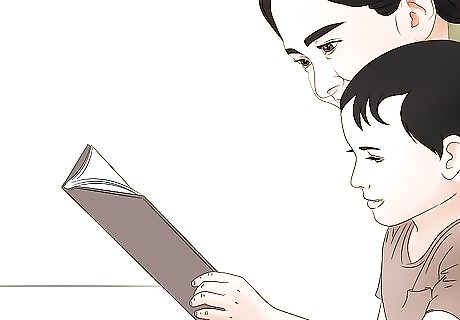
Read to your child. Read to your child as often as possible. Doing so teaches your child that reading is fun and also introduces your child to the way that written words sound when spoken aloud. Reading to your child is also a great bonding experience and will encourage them to love books. You can begin reading to your child from infancy onward. Use picture books, textured cloth books and books of lullabies for babies and toddlers. Once they get a bit older, you can introduce alphabet books and rhyming books. Engage your child by asking him questions about both the content of the book and its pictures. Asking your child questions about the book you are reading together makes the whole experience more interactive and encourages the child to actually comprehend what he is seeing and reading. With babies, you should try pointing at certain pictures and asking questions such as "Do you see the tractor?" while pointing at the tractor. This will help his vocabulary, while allowing him to interact with the reading process. As he progresses, point at animals like cats or sheep and ask him to make those animals' noises - like "meow" or "baa". This shows that your baby is understanding what they see, while also providing great entertainment!
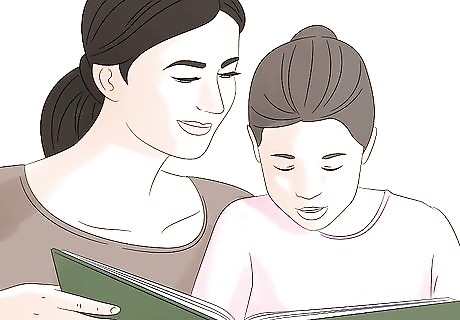
Set a good example. Even if your child displays an interest in reading from a young age, he will quickly lose interest if reading is not demonstrated or encouraged in the home. Children learn by example, so pick up a book and show your child that reading is something that adults enjoy too. Even if you're very busy, try to let your child see you reading for at least a couple of minutes everyday. You don't have to read a classic novel to set a good example. Read a newspaper, a cookbook, a thriller…it’s up to you!
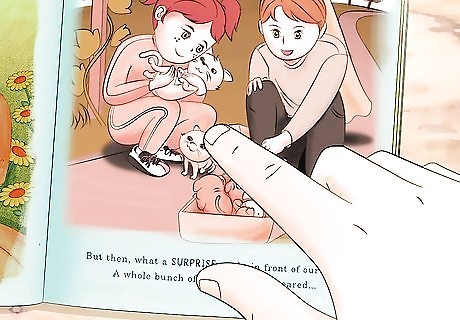
Look at the pictures. Looking at picture books is a great way to build vocabulary and to help children understand what is going on in a story. Before reading a new book, just flip through the pages, commenting on the pictures. Show your child how to spot context clues that will help them to read. Try asking questions that they can answer from looking at the pictures. For example, if there's a color word, ask them to guess what the word is from the picture. At first, ask your child to describe the pictures. Once they are able to describe the pictures well, ask them to draw conclusions about what might be happening in the story. You might ask, "What do you think is happening here?" or "What do you think the puppy is feeling?" Praise correct responses, and ask more questions to encourage them if they're frustrated.
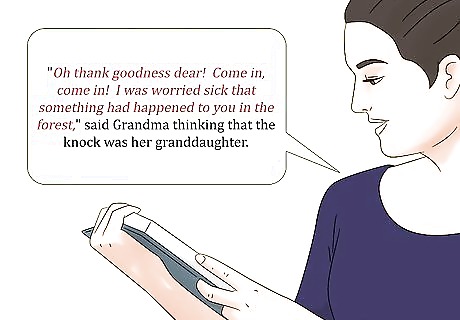
Use variety. When choosing materials to help your children learn to read, include a mixture of phonics books that they can eventually read all by themselves, slightly more advanced stories that you'll read together and just-for-fun materials of their choice, like comic books and magazines. Using various types of materials and activities helps make learning to read an enjoyable activity, not a chore. When you're reading to your child, vary your tone of voice, as well as your volume. If you can, give each character a different voice. This makes reading more fun and exciting for your child! Do you have a childhood favorite that you want to share with your kids? If there's a book that you've read over and over again, your love for it can be contagious.

Be creative. A little creativity goes a long way when it comes to teaching kids to read. If your child is stimulated by the learning process, you will find it easier to hold their attention and they will learn much faster as a result. Think outside the box and turn learning to read into a fun activity. Put on a show. You can make reading stories fun and help improve reading comprehension through role playing. Tell your kids that after reading the book together, you'll decide which characters each of you will play. You can write a short script together, create props and dress up in costumes or masks. Try making letters out of Play-Doh, writing in the sand at the beach, drawing on the carpet or using pipe cleaners to create words.
Teaching Adults

Understand that teaching an adult how to read is a difficult undertaking. Adults are not as quick at learning new skills as children and they may find it difficult to remember letter sounds and words that a child would pick up easily. However, teaching an adult how to read is also an extremely rewarding experience. You will just need time and a considerable amount of patience. Unlike children, adult learners cannot spend several hours in a classroom every day. If they are juggling work and family life, they will have a couple of hours a week at most to work on their reading. This can significantly prolong the learning process. Illiterate adults may also have a lifetime's worth of negative experiences and emotions that they associate with their inability to read, which can be difficult to overcome.

Assess their ability. In order to find out where to begin, you will need to assess your student's current reading ability. This may be a professional assessment or simply asking the learner to do whatever reading and writing he/she already knows, and taking note of where he/she struggles. Continue observing your learner's level throughout the learning process. If he or she consistently struggles with a particular skill or concept, take it as a cue to help work on that skill.

Make them feel secure. An illiterate adult's greatest challenge is overcoming insecurity about their ability to read. Many adults suffer from a lack of confidence and from the fear that it is too late for them to learn how to read. Express confidence in their learning abilities and reassure them that it is never too late to start. Reassure them that their familiarity with spoken English and their pre-existing vocabulary will play a major role in learning how to read. Many adults have spent years hiding their inability to read from teachers, family and co-workers. Let them know that they no longer need to be ashamed or embarrassed and that you respect their courage in coming to you to learn to read.

Use appropriate materials. When teaching adults, look for materials that are not too childish, or at least ask whether they mind using children's materials. However, keep in mind that children's books can be easy beginning materials, as they use simple words and rhymes to reinforce the connection between letter patterns and sounds. Also remember that if you use materials that are too difficult or outside of their comfort zone, adult readers can easily become discouraged. Using materials that are challenging, yet manageable will help to build the adult reader's ability and confidence.

Make it relevant. Try to use material that is interesting and relevant to your student. By using relevant materials, you are making the learning process less of a chore and are encouraging your adult student by showing them the practical applications of learning to read. Try using road signs, newspaper articles or restaurant menus when practicing reading. Use technology by sending your student each new word they have to learn via text message. This makes learning fun and relevant to everyday life.




















Comments
0 comment